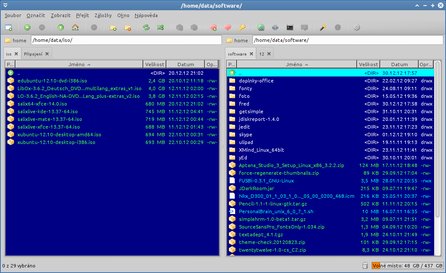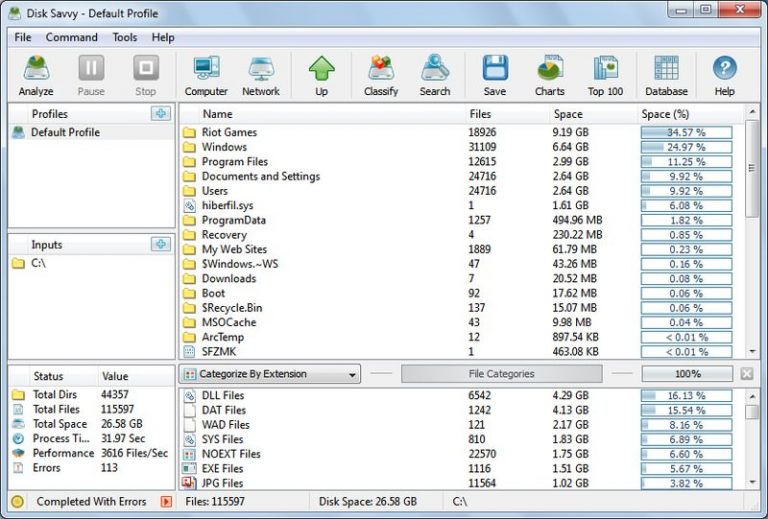

- Jdiskreport for ubuntu for mac#
- Jdiskreport for ubuntu software#
- Jdiskreport for ubuntu plus#
- Jdiskreport for ubuntu free#
There are many alternatives to JDiskReport for Mac if you are looking to replace it.

Jdiskreport for ubuntu plus#
En effet, il est capable de dresser la liste des 100 plus grands fichiers, les plus anciens ainsi que. Affichage des fichiers les plus anciens: il faut dire que JDiskReport est un outil efficace. It allows you to quickly find the largest, oldest or newest files and gather statistics about file sizes and types for each drive. Graphical disk space analyzer JDiskReport is a Java based disk analysis utility, that allows you to view disk space usage with the help of interactive pie charts.
Jdiskreport for ubuntu software#
This is ad-free uncrippled no-charge software that never expires. The tool analyses your disk drives and collects several statistics which you can view as overview charts and details tables. In addition to the software mentioned above you also have the option to use command line tools to find those large files when and where you don’t have access to a graphical desktop such as KDE or Gnome.JDiskReport enables you to understand how much space the files and directories consume on your disk drives, and it helps you find obsolete files and folders.
Jdiskreport for ubuntu free#
It has some of the useful functions pre-canned, such the tabs that shows you the top 50 files sorted by size and creation dates.Īll the software mentioned above are free and open source. This is again a analyzer along the same lines as the previous ones but written in Java. It provides a simple treemap like visualization of your folders and files and allows you the menu option to browse to these files. Xdiskusage is yet another simple program that analyzes and provides a visual display of your folders or hard disk. GDMap is again another simple program that lets you visualize the hard disk using treemaps. If you are looking to just find the largest files without much hassle and quickly, then this might be the software for you. In addition to the popular ones, there are also some simple software that are not as feature rich but works quite well… Filelightįilelight is a very simple program without much of the bells and whistles of many of the others. It is quite fast but I would suggest scanning the disks in chunks if you have a large hard disk. This is quite as feature rich as Kdirstat and provides you with several different views of your disk to easily track down those large files. In addition to the ability to scan individual folders and/or the entire filesystem, you can also scan remote server and filesystems. There is a treemap as well as a ring chart option allowing you to toggle between them. Like the Kdirstat it provides you with several tools for easy visualization. Disk Usage Analyzer (aka Baobab)īaobab is the default disk analyzer utility for Gnome. It is quite feature rich, but it does takes a little getting using to as you might have to learn some of the keyboard options to navigate the interface.īut as i mentioned earlier, if you do not have desktop, then it could be a life saver. This is a graphical program that uses the Ncurses for its interface, so it is quite limited but does a good job nevertheless.

I am not sure what you think of Ncurses, but it can be quite helpful when you do not have a working X. The utility is the primary disk usage program for kde, but it should also run in Gnome if you have the right packages installed. It seems to be quite fast, but i would suggest choosing a couple of directories from the / (root) at a time rather than the whole file system, but then it depends on the size of the hard disk. For example, clicking on the largest block will immediately show you the file in the directory tree. In addition to the classical tree list view of the files, it also provides an alternate view called Treemap that allows you to visualize the file sizes and access it easily. Kdirstat provides you with various options to delete files right from the user interface. The foremost reason of finding the largest files is to know whether they can be deleted in order to reclaim disk space. This is probably the one of the most feature rich disk analyzers and is actually quite easy to use. Kdirstat is a graphical disk usage utility with quite a lot of features. There are also some command line options to find large files available, just in case you do not have access to a graphical desktop interface where you can run any of the following disk analyzer software. There are some disk analyzers that you can use to scan your hard disk and find those large files. It is almost impractical to go though each and every folder in order to identify large files that can deleted. Quite often you have to find large files in your system so that you can clean it up and reclaim some of the disk space.


 0 kommentar(er)
0 kommentar(er)
